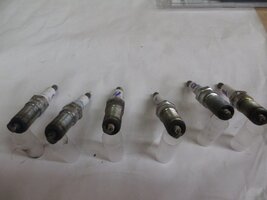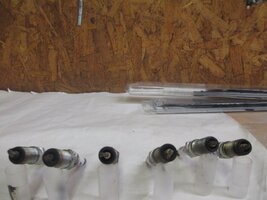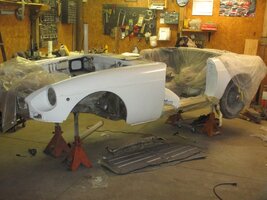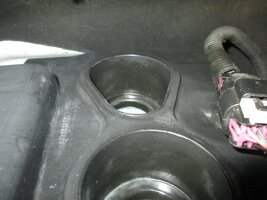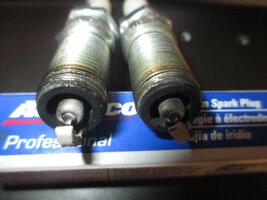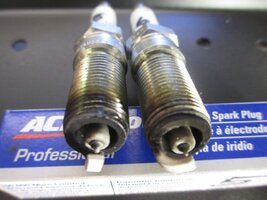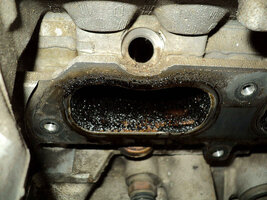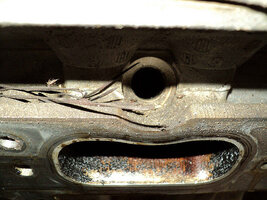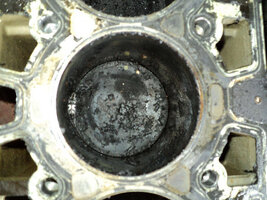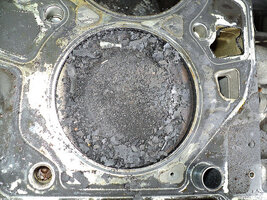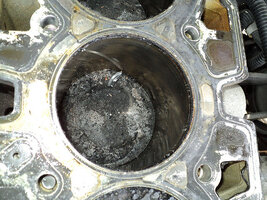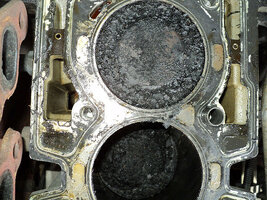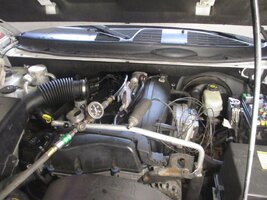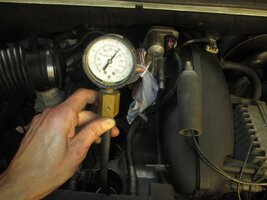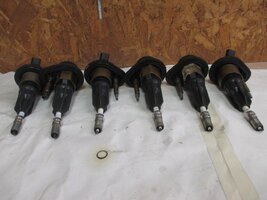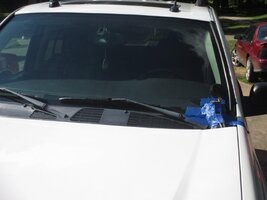Hey all, just recently joined. Bought an '05 TB with 94k on it last week. I really went over it before I bought, crawled all around underneath etc.
test drive very nice. BUT we went to pick it up after my wife had the title transferred: I watched in my rearview as she fired it up, big cloud of smoke. I'm like oh no...
we contacted the PO who supposedly called his mechanic and was advised "it's been sitting/short trips and it will clear up once driven" .
The next day I check the oil and it's not even on the stick (showed ok on test drive day but the vehicle wasn't level.
I fill it up and drive it to work, 60mi round trip. Seems great no smoke.
This weekend I pull the plugs. A.C. Iridiums. All look good except 5 and 6. They look like they are burning oil to me, I'll get a pic. I put new A.C. Iridiums in and cleaned the TB which looked to be recently done.
Havent driven it yet, waiting on paint to dry (I repaired the door bottom and front of the hood rust).
I've searched here and oil burning doesn't seem to be common with the i6.
More interesting info: the P.O. said "new head and timing belt". I checked it over and it doesn't look like the head has been off to me, although the bolt that holds the emission hoses on the back of the head is missing, and some wire harnesses were unclipped, so some work has been done.
He didn't seem to know about cars, so I saw a new valve cover gasket and serp belt and figured that's what he meant.
Sorry for the novel. I guess one more thing I'll check is if there is vacuum on the double 90 hose between the valve cover and the resonator.
Any other ideas? Thanks for all of the info here.
test drive very nice. BUT we went to pick it up after my wife had the title transferred: I watched in my rearview as she fired it up, big cloud of smoke. I'm like oh no...
we contacted the PO who supposedly called his mechanic and was advised "it's been sitting/short trips and it will clear up once driven" .
The next day I check the oil and it's not even on the stick (showed ok on test drive day but the vehicle wasn't level.
I fill it up and drive it to work, 60mi round trip. Seems great no smoke.
This weekend I pull the plugs. A.C. Iridiums. All look good except 5 and 6. They look like they are burning oil to me, I'll get a pic. I put new A.C. Iridiums in and cleaned the TB which looked to be recently done.
Havent driven it yet, waiting on paint to dry (I repaired the door bottom and front of the hood rust).
I've searched here and oil burning doesn't seem to be common with the i6.
More interesting info: the P.O. said "new head and timing belt". I checked it over and it doesn't look like the head has been off to me, although the bolt that holds the emission hoses on the back of the head is missing, and some wire harnesses were unclipped, so some work has been done.
He didn't seem to know about cars, so I saw a new valve cover gasket and serp belt and figured that's what he meant.
Sorry for the novel. I guess one more thing I'll check is if there is vacuum on the double 90 hose between the valve cover and the resonator.
Any other ideas? Thanks for all of the info here.

